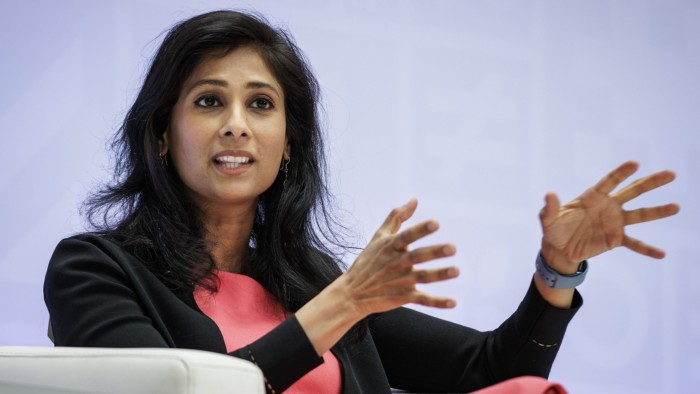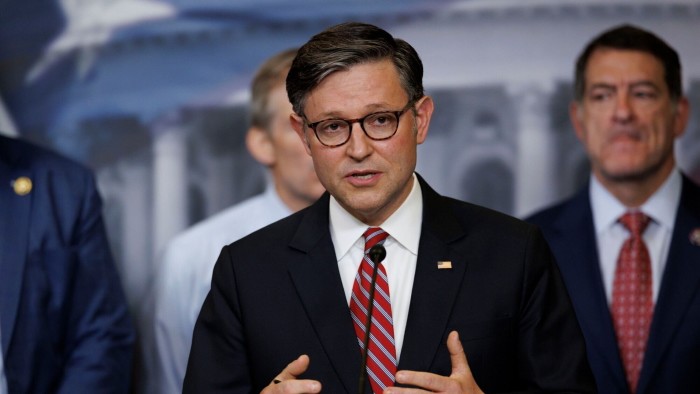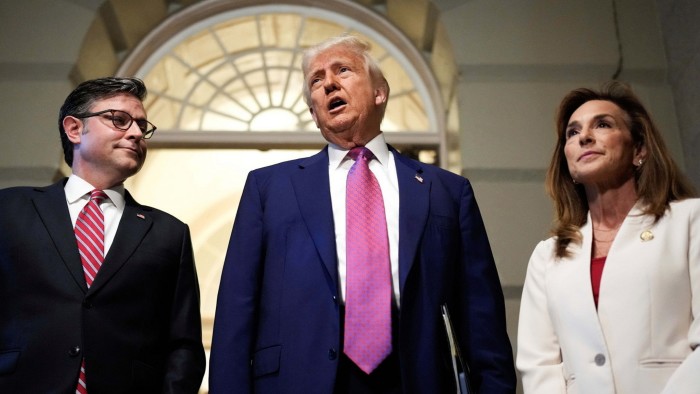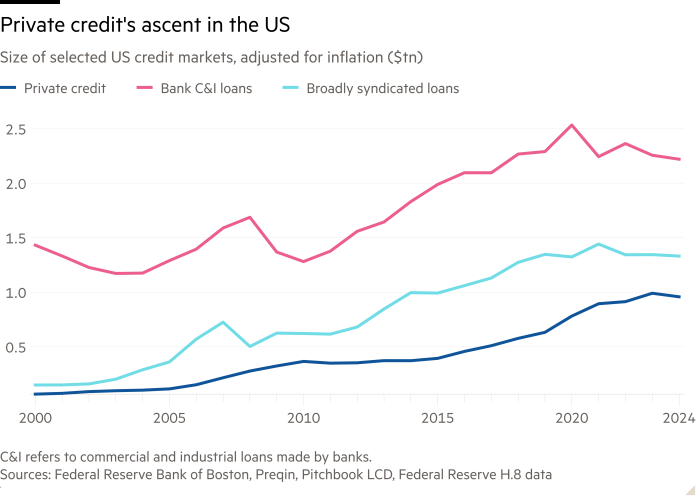IMF urges US to curb deficit as Trump tax cut plan stirs debt fears

Unlock the White House Watch newsletter for free
Your guide to what Trump’s second term means for Washington, business and the world
A top IMF official called on the US to reduce its fiscal deficit and tackle its “ever-increasing” debt burden at a time of rising concerns about President Donald Trump’s plans for sweeping tax cuts.
“The US fiscal deficits are too large and they need to be brought down,” Gita Gopinath, the IMF’s first deputy managing director, told the Financial Times this week.
She also warned that the world’s biggest economy was still affected by “very elevated” trade policy uncertainty despite “positive developments”, such as the Trump administration dialling back tariffs on China.
Gopinath’s comments came after Moody’s stripped the US of its last remaining pristine triple A credit rating due to concerns over the country’s growing debt. Trump’s proposal to prolong his 2017 tax cuts beyond this year has added to those worries and prompted unease among investors.
The administration says the cuts — combined with deregulation — will pay for themselves with higher growth, but neither Moody’s nor financial markets are convinced. The rating agency said last week the proposed legislation, which Trump calls “the big, beautiful bill”, would raise US deficits from 6.4 per cent last year to just under 9 per cent by 2035.
Treasury secretary Scott Bessent told NBC on Sunday that the Moody’s downgrade was “a lagging indicator”, blaming the fiscal situation on the Biden administration. He added that the administration was “determined to bring the spending down and grow the economy”. He has previously said he will cut the deficit to 3 per cent by the end of Trump’s term.
But Gopinath noted that US debt to GDP “is ever-increasing”, adding: “It should be that we have fiscal policy in the US that is consistent with bringing debt to GDP down over time.” The federal government debt held by the public amounted to 98 per cent of GDP in fiscal 2024, compared with 73 per cent a decade earlier, according to the Congressional Budget Office.
Although the IMF said last month it expected the US fiscal deficit to fall this year as long as tariff revenues grew, those projections did not account for Trump’s tax bill, which is winding its way through Congress. Gopinath added that Bessent had been right to make a “clear call” to bring down fiscal deficits.
Trump is pressuring Republicans in the House of Representatives, where he has a slim majority, to support the legislation, arguing that doing otherwise would increase voters’ tax bills.
Deficit worries and the Moody’s downgrade have driven the dollar lower and pushed prices down and yields up in the Treasury market. The 30-year Treasury bond yield on Monday rose to 5.04 per cent, its highest level since 2023.
A bigger deficit means the government will have to sell more bonds at a time when foreign and domestic investors have begun to question the stability of the US market.
The IMF in April cut its US growth forecast by nearly a percentage point to 1.8 per cent in 2025, while dropping its global growth projection to 2.8 per cent, as it incorporated the impact of Trump’s tariffs.
Since then, Trump has announced sharp cuts to American levies, as China and the US agreed to slash respective tariffs by 115 percentage points for 90 days.
“The tariff pause with China is a positive development,” said Gopinath, who also welcomed the US-UK agreement. But she stressed that the US effective tariff rate remained far higher than it was last year and that high levies on China had only been paused.
First-quarter GDP figures had been roughly in line with IMF expectations, she said, adding that data remained difficult to read because businesses rushed to buy supplies ahead of the introduction of Trump’s tariffs.
“It is going to take a little while before the effects of all these developments work through the data,” she said. “It is absolutely a positive to have lower average tariff rates than the ones we assumed in [April] . . . but there is a very high level of uncertainty, and we have to see what the new rates will be.”
Additional reporting by Kate Duguid in New York








